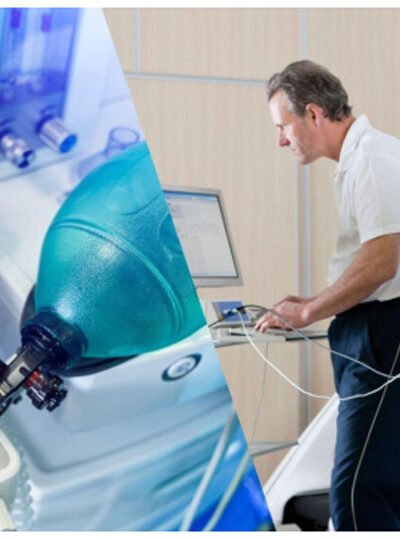 Oxygen is essential for life, and advancements in medical and fitness technology have created systems to optimize its use. Among these are medical oxygen systems and EWOT systems (Exercise With Oxygen Therapy). While both deliver oxygen to the body, their purpose, design, and application vary significantly. Understanding Oxygen Consumption and Usage During Physical Exercise is crucial when evaluating how these systems can enhance performance and recovery. This article explores the key differences, helping you make an informed decision whether you’re considering a system for medical or fitness needs
Oxygen is essential for life, and advancements in medical and fitness technology have created systems to optimize its use. Among these are medical oxygen systems and EWOT systems (Exercise With Oxygen Therapy). While both deliver oxygen to the body, their purpose, design, and application vary significantly. Understanding Oxygen Consumption and Usage During Physical Exercise is crucial when evaluating how these systems can enhance performance and recovery. This article explores the key differences, helping you make an informed decision whether you’re considering a system for medical or fitness needs
What Are Medical Oxygen Systems?
Medical oxygen systems are designed to provide oxygen therapy to individuals who have difficulty breathing or require supplemental oxygen for medical conditions. These systems are most commonly used in hospitals, clinics, and home care settings.
Key Features of Medical Oxygen Systems:
- Purpose:Primarily used to treat conditions like chronic obstructive pulmonary disease (COPD), pneumonia, sleep apnea, and respiratory distress.
- Delivery Methods:Oxygen is delivered through devices such as nasal cannulas, masks, or ventilators.
- Regulated Oxygen Flow:The flow rate is prescribed by a healthcare professional and typically ranges from 1 to 5 liters per minute (L/min), though higher flow rates are possible for severe cases.
- Compliance Standards:These systems adhere to strict medical regulations to ensure safety and effectiveness.
- Portability:Modern medical oxygen systems include portable oxygen concentrators (POCs) for mobility.
Common Types of Medical Oxygen Systems:
- Oxygen Concentrators:Extract oxygen from the air and deliver it to the patient.
- Oxygen Cylinders:Pre-filled tanks of oxygen, used in both emergency and long-term scenarios.
- Liquid Oxygen Systems:Store oxygen in a liquid form, allowing for higher capacity in a compact design.
What Are EWOT Systems?
Exercise with oxygen therapy is designed to enhance physical performance, recovery, and overall health. They are commonly used in fitness centers, athletic training facilities, and even home gyms.
Key Features of EWOT Systems:
- Purpose:To increase oxygen levels in the body during exercise, improving stamina, recovery, and cellular function.
- High-Flow Oxygen Delivery:These systems deliver oxygen at a higher flow rate compared to medical systems, typically exceeding 10 L/min.
- Integrated with Exercise Equipment:EWOT systems are often used with treadmills, stationary bikes, or other cardio equipment.
- Focus on Wellness:Unlike medical systems, EWOT systems are not designed to treat specific diseases but to optimize health and fitness.
Benefits of Using EWOT Systems:
- Improved energy levels and endurance.
- Enhanced recovery from physical exertion.
- Potential anti-aging effects due to increased oxygenation at the cellular level.
Medical Oxygen Systems vs EWOT Systems
The primary distinction between medical oxygen systems and EWOT systems lies in their purpose and target audience. Below, we compare these two systems across several parameters:
| Feature | Medical Oxygen Systems | EWOT Systems |
| Purpose | Treats medical conditions requiring oxygen therapy. | Enhances physical performance and recovery. |
| Target Audience | Patients with respiratory or chronic illnesses. | Athletes, fitness enthusiasts, and individuals seeking wellness benefits. |
| Oxygen Flow Rate | Typically low (1-5 L/min). | High-flow (10+ L/min). |
| Regulations | Strictly regulated by medical standards. | Less regulated; focuses on wellness rather than medical treatment. |
| Portability | Available in portable options like oxygen concentrators. | Usually integrated with stationary exercise setups. |
| Cost | Often covered by insurance for medical use. | Out-of-pocket expense; varies based on the system’s features. |
Choosing the Right System for Your Needs
When deciding between a medical oxygen system and an EWOT system, consider your primary goal:
- For Medical Needs:If you have a diagnosed condition requiring oxygen therapy, consult your healthcare provider. They will prescribe the appropriate system based on your oxygen needs.
- For Fitness and Wellness:If you’re looking to boost your performance and recovery, an EWOT system may be the right choice. Look for the EWOT system that suits your fitness goals and budget.
Latest Trends in Oxygen Therapy Systems
- Advancements in Portability:Both medical and EWOT systems are becoming more compact and user-friendly.
- Smart Technology Integration:Systems now feature apps and monitoring tools to track oxygen usage and performance.
- Increased Accessibility:The growing popularity of exercise with oxygen therapy has made EWOT systems more accessible to home users.
Conclusion
Understanding the key differences between medical oxygen systems and EWOT systems is crucial for making an informed decision. Medical oxygen systems cater to individuals with health conditions requiring precise oxygen delivery, while EWOT systems are designed for fitness enthusiasts looking to improve their performance and recovery.
Whether you need oxygen therapy for medical or wellness purposes, assessing your specific needs and consulting professionals can help you choose the right system. With the latest advancements, both options are becoming more effective and accessible, empowering users to achieve better health and well-being.




Leave a Reply